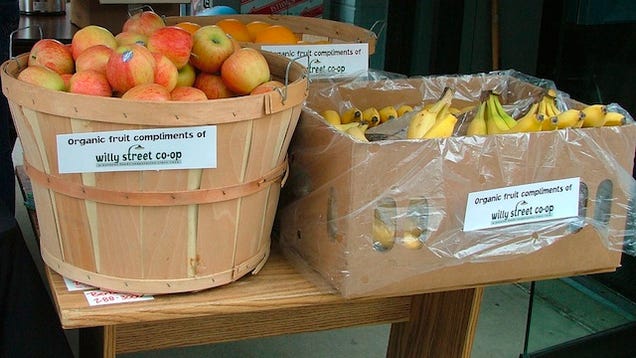Imagine a world where access to wholesome, affordable food is not a privilege but a fundamental right. Food cooperatives, or co-ops, are blazing a trail towards this reality, creating a vibrant tapestry of community-owned and operated food systems across the globe. This comprehensive guide will be your compass as you navigate the inspiring journey of starting a food co-op, empowering you to bring lasting nutritional and economic benefits to your neighborhood and beyond.

Image: www.pinterest.com
Laying the Foundation: Understanding Food Co-ops
Food co-ops are member-owned and operated businesses where individuals come together to purchase and distribute food collectively. This unique model empowers members to have a direct say in the sourcing, pricing, and distribution of their food, fostering a deep sense of community and independence.
The history of food co-ops can be traced back to the late 19th century, when communities in Europe and North America formed cooperatives to combat rising food prices and improve access to quality sustenance. Today, food co-ops thrive in both rural and urban areas, ranging from small neighborhood initiatives to large-scale regional organizations, serving millions of members worldwide.
Step-by-Step Guide to Starting a Food Co-op
1. Gather a Core Group of Enthusiastic Individuals:
Starting a food co-op is a transformative endeavor that requires passion and commitment from its founding members. Begin by rallying like-minded individuals who share a common vision of a thriving food co-op in your community.

Image: lifehacker.com
2. Establish Clear Objectives and Values:
Define the purpose and mission of your food co-op, outlining its core values and objectives. Determine the specific needs and goals that your co-op will address, whether it’s increasing access to healthy food, supporting local farmers, or fostering environmental sustainability.
3. Choose a Legal Structure:
Incorporate your food co-op as a legal entity, such as a non-profit organization or a cooperative corporation. This will provide your co-op with legal recognition, liability protection, and the ability to transact business.
4. Secure a Location:
Find a suitable location for your food co-op that meets the needs of your members and aligns with your vision. This may involve securing a warehouse, retail space, or a combination of both. Consider factors such as accessibility, storage capacity, and potential foot traffic.
5. Source Food and Vendors:
Establish relationships with reliable vendors who share your commitment to quality and sustainability. Explore local farms, food processors, and distributors to source fresh, wholesome products that meet the diverse needs of your members.
6. Recruit Members:
The lifeblood of your food co-op is its membership. Engage in outreach and education initiatives to inform your community about the benefits and values of joining your co-op. Offer flexible membership options to accommodate various needs and budgets.
7. Set Up Operations:
Establish operational procedures for your food co-op, including purchasing, inventory management, pricing, and distribution. Train volunteers and staff to ensure the smooth and efficient functioning of your business.
Expert Insights and Actionable Tips
“Food co-ops are more than just food distribution centers; they are hubs for community engagement and empowerment,” emphasizes Dr. Susan Baker, President of the Cooperative Grocers Association. “By fostering local food systems and providing access to healthy, affordable food, co-ops create a ripple effect that transforms neighborhoods and nourishes communities.”
One successful strategy for growing and sustaining a food co-op is to diversify revenue streams. Consider offering additional services such as cooking classes, nutrition workshops, or community-supported agriculture (CSA) programs to generate additional income and engage with your members.
Empowering Communities Through Collaboration
Food co-ops are not isolated entities; they thrive on collaboration and partnerships. Reach out to local organizations such as food banks, farmers’ markets, and community gardens to explore opportunities for collaboration and mutual support.
How To Start A Food Co Op
Conclusion: A Future of Food Justice and Community Resilience
As you embark on this journey of starting a food co-op, you are not only building a business but also a living tapestry of community resilience and food justice. Your co-op will serve as a beacon of hope, nourishment, and economic empowerment for generations to come.
We encourage you to share your experiences and connect with other food co-op enthusiasts on online forums and social media platforms. Join the growing movement towards a more just and sustainable food system where everyone has access to wholesome, affordable food. Together, we can create a future where communities thrive and food is a source of nourishment, dignity, and connection.